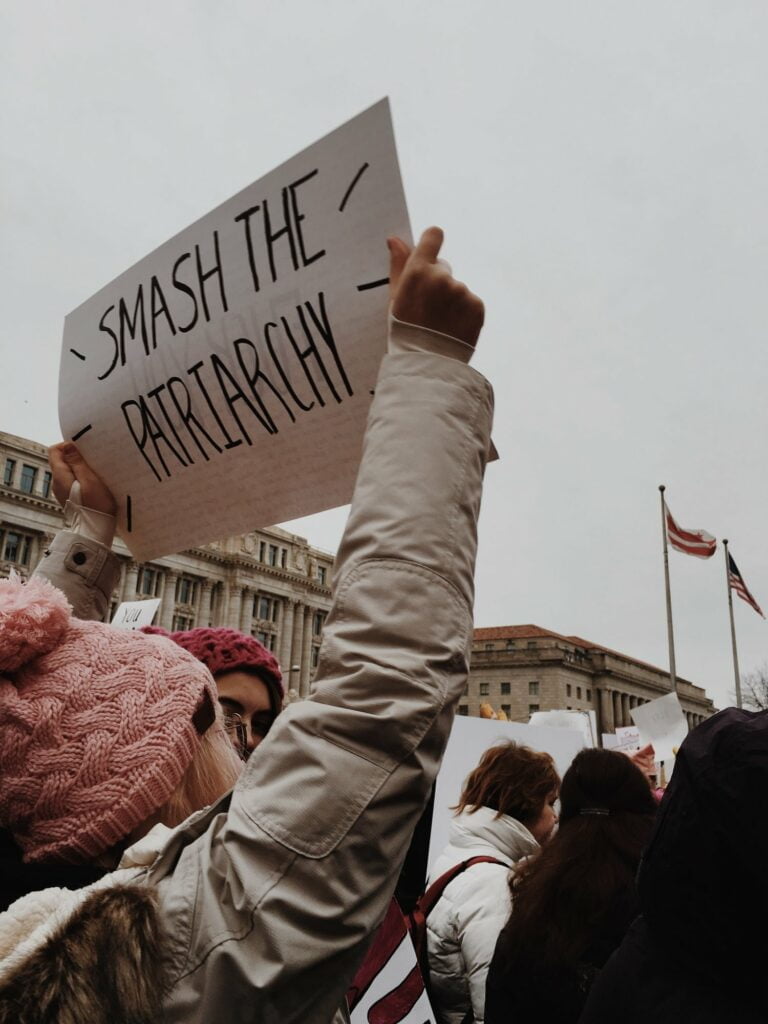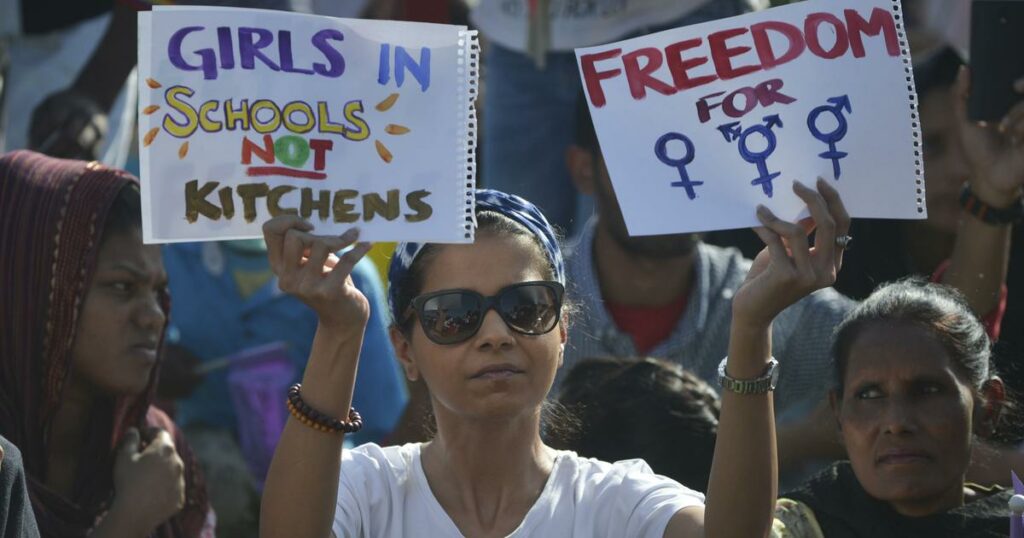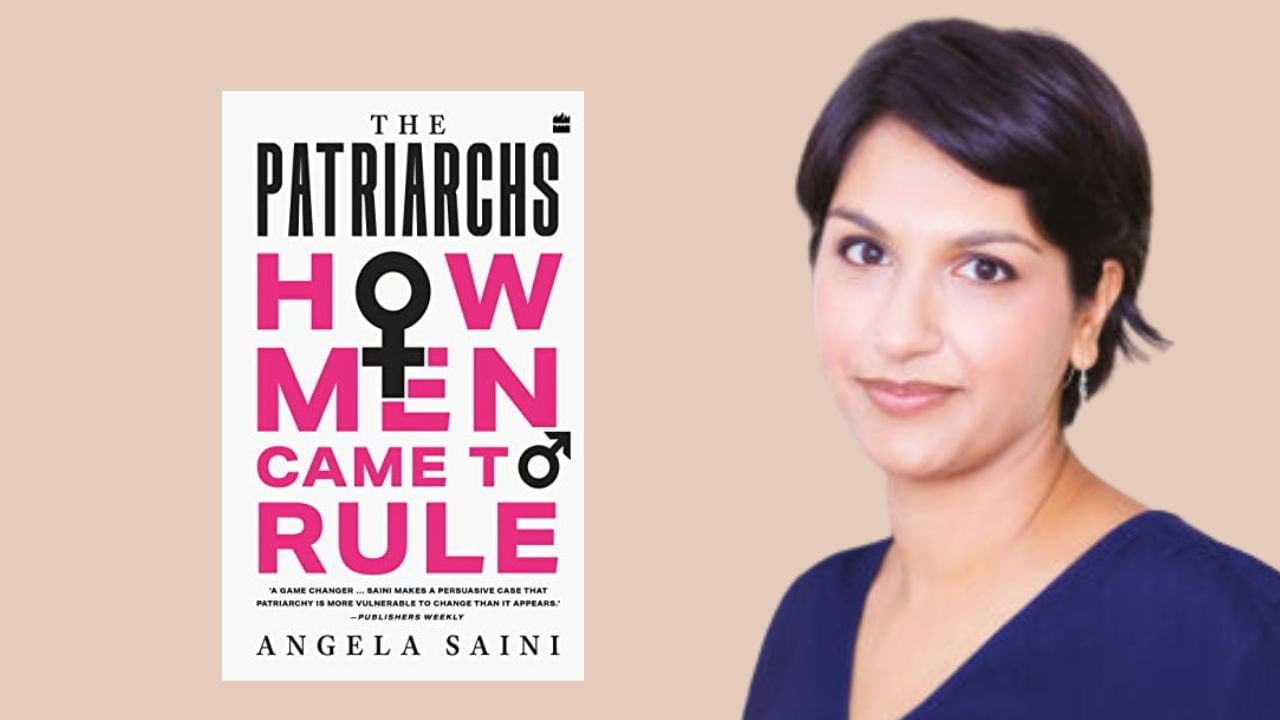‘The Patriarchs: How Men Came to Rule’ by Angela Saini uncovers the myth of biological differences and goes to the roots of patriarchy – arguing that patriarchy isn’t inevitable, as we’re told, but is constantly remade, reworked, and reinforced. She writes, “By thinking about gendered inequality as rooted in something unalterable within us, we fail to see it for what it is: something more fragile that has to be constantly remade and reasserted.”
The idea that men and women are inherently different has been fed to us since time immemorial. Often, the biological difference is used as a justification for the oppression of women; women are naturally better at housework because of their ability to create life, and men’s physical strength makes them naturally better at protecting their families. Because women are considered weaker than men, our biological differences make our oppression inevitable.
But what if these biological differences were manufactured and not preexisting?
From anthropology to science and history to geography, Angela Saini revisits events old and new to tell us but one thing: the patriarchy is extremely fragile, and can be overcome.
Patriarchy and the concept of ‘nation’
Angela Saini argues that patriarchy began to gain legitimacy with the formation of the early states.
A nation – with its set of people, enmeshed in their language, traditions, and culture, thriving in a community – heavily depends on controlling its people to remain legitimate. Without it, a nation is vulnerable to invasion and domination. How do those in power control the people? By codifying their existence, reminding them of their duty, and silencing those who defy authority.
From anthropology to science and history to geography, Angela Saini revisits events old and new to tell us but one thing: the patriarchy is extremely fragile, and can be overcome.
Wars that have been fought throughout history have depended on manpower to invade the enemy’s territory; if men were the ones fighting, women were the ones supplying the kingdom with future fighters. To maintain its existence and progress, women had to continue populating the state. Hence, women’s bodies became the site on which states were built. And when women’s bodies are policed, the order is maintained.

Delving into the history of the United States, Angela Saini gives us a brilliant example of the Haudenosaunee tribe. This tribe, much like the numerous Native American tribes at that point, had its own unique set of norms and rules. The Haudenosaunee peoples lived in a democratic environment – women were physically, economically, and socially equal to men, and theirs was a fairly gender fluid society.
But the European settlers arrived with the goal to seize the land and expand their influence, which could be achieved by showing them that they were uncivilised, savage, primitive, and in need of reform – with European culture being the example to emulate.
But this did not happen overnight. Over time, the Europeans observed, understood, and codified the Native Americans’ way of life. This codification helped them make a case for how backward Native Americans were, and how desperately they needed to be reformed.
“Sometimes violence, or the threat of it, was used, but more often it was formed by the layer-upon-layer creation of social norms, laws, and edicts,” writes Saini about the formation of societies.

One of the most salient features of colonialism is the notion that Europeans were at the pinnacle of civilisation and development, and all others who did not conform to the Victorian way of life were savages. This bias found its way out of governance and into anthropology, science, and literature, thus bolstering its presence and eventually making it a fact of life.
In essence, patriarchy began as a way to ensure a state continued to exist and thrive.
Divide and rule
One very important feature that makes the patriarchy so strong and almost universal is how it is practised on a micro-level.
Angela Saini talks about the codes, rules, and laws that were put in place to ensure patrilineality and take away the power from the hands of women. But one important aspect of maintaining patriarchy is displacing women from their comfort zone in an attempt to completely disarm them. And at the heart of this displacement are religious customs.
Patriarchy creates a dependency on women, automatically making them submit for them to live comfortably. Patrilineality and patrilocality are intrinsic in making women less powerful.
Patriarchal practices in religion often call for a woman to leave her natal home and assimilate with her husband’s family. It’s not only that the woman has been taken away from the comfort of her home; mix that with the lack of rights – to inherit property, to divorce, to be the legal guardian of her children, or even to get an abortion – and you’ve got a person who is no different than a slave.

Girls are often brought up with the notion that their stay in their natal home is temporary (paraya dhan, as we call it here); cultural practices train women to believe that they are whole only with a husband by their side.
Patriarchy creates a dependency on women, automatically making them submit for them to live comfortably. Patrilineality and patrilocality are intrinsic in making women less powerful.
But as history can tell us, women have been able to resist this by coming together in protest to fight against the rules that take their rights from them. This goes to show that oppression and resistance always go hand in hand.
To a bright, optimistic future
Angela Saini’s research is exemplary in that it shows us that no journey towards equality has ever been linear. Soviet Russia, for instance, had some of the highest rates of employment among women; women were allowed to vote, study, work, own property, and divorce.
But over time, as the political climate changed and the need for power became more militant, many of these rights remained on paper; women were encouraged to stay home and birth more children for the sake of the nation, which caused a drop in employment rates among other things. This goes to say that nothing remains static; society is dynamic and on the brink of change at all times.

Saini’s arguments show us that biological differences have never been a problem in egalitarian societies; it was the need to control women’s bodies that brought on patriarchy. This is precisely why the argument that patriarchy is inevitable is a weak one – history shows us that no community has ever blindly submitted to oppression.
Matrilineal and egalitarian societies have existed and can exist again. All we have to do is question those in power and never stop.
About the author(s)
Kanksha is a graduate in gender, culture, and development studies. An aspiring writer, she loves talking feminism, food, body positivity, and TV series.




